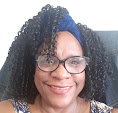My daughter recently visited us in Namibia and we went up North to a small village about 90 kms south of the Angolan Border called Omafo. It is in uuKwambi. My husband is from that village and his 102+ (?) year old Mother still lives there with a passel of grand and great-grand children, nieces and nephews. My husband's 76 year old brother also lives on an adjacent farm.
My daughter is named after her grandmother. They are both Mweneni Emilia. My husband's mother is Mweneni Emilia Kalenga and my daughter is Mweneni Emilia Asheeke.
From my perspective as a foreigner married to a Namibian, the North is the heartland of the country, no disrespect for the other areas intended. The vast majority of Namibia's sparse population (only 2.1 million people on nearly 900,000 sq kms of land!), lives in the Northern areas. My husband is from the Kwambi ethnic group, a part of the Owambo people. He speaks Oshikwambi as his mother tongue, but of course understands and speaks the other Oshiwambo languages of Oshikwanyana, Oshindonga, Oshiherero, and a few others.
During the struggle for liberation from apartheid and colonialism, the people living in the North caught hell from the South African army busy with war in Angola and most particularly, they were regularly terrorized by the paramilitary 'security' forces supporting South Africa called, Koevoet. Times back then were horrible for all Namibians, but particularly those in the North.
My mother-in-law told me of a tale from the early 1980's where the Boers came to their homestead in the dead of night looking for SWAPO fighters in order to capture or kill them. Of course, her son (my husband!) was a SWAPO fighter, but she and her neighbors had to keep that very secret lest they arrest, torture, or even kill them in retaliation. Those were the bad 'ol days indeed.
My husband could not, for her safety and that of his whole family, and village, see or communicate with his mother at all. From 1976 when he left for the guerilla war until independence in 1990, he (like tens of thousands of others who fought the war for Independence) never saw his mother or anyone else from his family. He could send letters every so often via third parties, but other than that, no communication at all. Relatives died, even his own sister, and he could only 'hear' about it years later.
Well, that night when the Boers came looking for SWAPO, my mother-in-law told me that the 'loud people with guns' roused all the people in the village and herded all them (including her!) into one hut. That means maybe 25 people in a hut for about 5 or 6 people. They were told they would be shot if they came out.
So, the villagers had to stand in a crouch (those particular huts are not made high enough to stand erect; they were sleeping huts) with bodies pressed together like cattle. If you had to go to the bathroom, then, that had to be done right there in the hut; no eating, no talking, no light, no water, nothing but terror. There were women with babies who were also locked in there. They had to stay there all night long. Stories like these were 'normal' under the illegal occupation of Namibia by South Africa.
 |
| The top of one of the huts at my mother-in-law's farm |
This was one of the hundreds of reasons why so many, like my husband, joined the war against the Boers and WON!
My spry, healthy and saucy mother-in-law is presumed to be 102, but she is probably older! She told me that in those days, there were no hospital births for 'natives', and the children were usually only recorded when they came for baptism at the mission churches. Those baptismal cards doubled as birth certificates for many decades (and are still accepted!) in Namibia. Babies were rarely baptized back then; small children were because they were old enough to walk several kilometers just to get to the church. therefore, the baptismal date is not necessarily the birthdate.
My mother-in-law has an ancient ID card written in both German and Afrikaans that says she was born in 1912. Likely, that is the year she was baptized. She only knows that she was born in the same year as the "Old Chief's second son, just before the small rains in the same year her father sold the largest bull the village ever saw." The verbal 'calendar' was kept based on the weather or other notable events and handed down.
 |
| sunset at the farm's back fence |
Namibia has been free, safe and peaceful for nearly 25 years and many tourists (1.3 million in 2013) come to enjoy the beauties and bounties of the present day in the Land of the Brave. You should come too and hear more stories just like my mother-in-law's!
When you do, tell'em,
Jackie sent ya'

